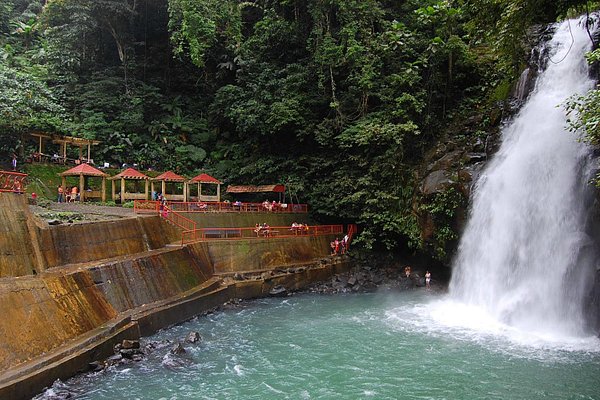Table of Contents
One of the treasures of Cabadbaran’s history is steeped in antiquity, reaching back to 1200 A.D. Ancient villages from the 12th century once thrived along the region’s waterways, such as Caasinan, Cambuayon, and Capudlusan. These pre-Spanish Cabadbaranon’s shared an era with the archaeological sites in Butuan City, and today, their treasures can be explored at the Cabadbaran City Artifacts Gallery, temporarily housed at the City Library.
During the early years of Spanish colonization, historical records are sparse, with only a single site in Sanghan providing evidence of Chinese ceramics dating back to the 15th and 16th centuries.
In 1867, Cabadbaran first emerged in history as a small village chosen by Spanish authorities for a new reduction, known as “La Reunion de Cabarbaran.” It absorbed the local population, including people from Bunawan, Talacogon, and Solibao, who were compelled to move by Spanish authorities. However, La Reunion was disbanded in 1879, prompting the return of upper Agusan’s inhabitants to their original places, while the rest of the population integrated into Tubay.
What is Cabadbaran City known for?
Cabadbaran, formally recognized as the City of Cabadbaran (Cebuano: Dakbayan sa Cabadbaran), holds the status of a sixth-class component city and serves as the de jure capital of Agusan del Norte province in the Philippines. As of the 2020 census, it boasts a population of 80,354 individuals.
Established in 1894, this city has transitioned from its early Spanish colonial roots to emerge as the leading municipality in Agusan del Norte. Its cultural wealth is prominently displayed through the well-preserved colonial-era houses and an impressive array of archaeological treasure.
How to get to Cabadbaran?
Reaching Cabadbaran City in Agusan del Norte, offers several transportation choices tailored to your starting point and preferences.
Here are the available options:
By Air:
The closest airport to Cabadbaran City is Bancasi Airport in Butuan City, approximately 60 kilometers away. Upon arrival, you can pick for a taxi or van ride to reach Cabadbaran City.
By Bus:
Numerous bus companies provide regular services to Cabadbaran City from various Mindanao locations, including Cagayan de Oro, Davao, and Surigao City. Well-known bus operators in the region include Bachelor Express, Rural Transit, and Super 5.
By Car or Motorbike:
If you have your own vehicle, Cabadbaran City can be accessed by driving via the national highway connecting other major Mindanao cities. Alternatively, you can rent a car or motorbike from rental agencies in nearby cities like Butuan and Surigao.
By Ferry:
If you are traveling from Visayas or Luzon, you can board a ferry to nearby port towns such as Surigao or Nasipit. From there, you can continue your journey to Cabadbaran City by bus or van.
In summary, Cabadbaran City offers various transportation options, allowing you to choose the most convenient one based on your departure location and budget.
http://www.maplandia.com/philippines/region-10/agusan-del-norte/cabadbaran
Cabadbaran City offers a variety of activities and places to explore, including:
Pongkay Prayer Mountain
A serene and spiritually significant destination with a challenging ascent and a tranquil atmosphere for reflection and meditation.
Tumipi Cold Spring
A pristine oasis with clear waters, perfect for swimming and picnics, known for its therapeutic qualities.
Atega Ancestral House
A historic Spanish-era house with a fusion of architectural influences, offering a glimpse into the city’s past.
Dagkot Festival
An annual cultural celebration featuring colorful costumes, traditional dances, and music performances that showcase the city’s heritage.
Virgen de la Candelaria Parish
A revered church dedicated to the Blessed Virgin Mary, known for its candle-lighting tradition during Holy Week.
Higanteng Bato
A monumental rock formation that stands as a geological marvel, surrounded by tranquil waters and natural beauty.
These are the Activities and Places to Explore in Cabadbaran City
Pongkay Prayer Mountain
Nestled amidst the scenic beauty of Cabadbaran, the Prayer Mountain stands as a testament to both natural splendor and spiritual reverence. Located in the heart of Barangay Kauswagan, this enchanting destination beckons travelers and seekers alike with its promise of tranquility and spiritual enlightenment. Accessing this sacred site is a breeze, as it’s just a short 15-minute tricycle ride away from the bus terminal, making it easily reachable for visitors from near and far.
Known far and wide, the Prayer Mountain is a beloved gem among the locals, and its presence is a source of pride for the community. With an ascent consisting of approximately 700+ steps, it offers a moderate challenge that takes roughly 30 minutes to an hour to conquer. The best time to start this ascent is in the early morning, around 5 am, just as the first rays of sunlight gently kiss the landscape. This serene hour allows visitors to experience the mountain in a unique and tranquil ambiance, making it an ideal time for reflection and meditation.
As you ascend the Prayer Mountain, you’ll not only feel your physical exertion but also a sense of spiritual awakening. The mountain’s tranquil environment, combined with the invigorating climb, creates an atmosphere conducive to deep contemplation and connection with the divine. To enter this hallowed ground, there is a nominal entrance fee of just 10 pesos. This fee goes towards the upkeep and maintenance of the Prayer Mountain, ensuring that it remains a pristine and sacred place for generations to come. The responsibility for its maintenance falls upon the Saladaga family, respected and cherished members of the Cabadbaran community.
They have collaborated with the local government and some private individuals to transform this mountain into a place of spiritual solace and natural beauty of treasures. As you stand atop the Prayer Mountain, gazing at the horizon painted with the colors of dawn, you’ll understand why this place is revered by both locals and visitors. It’s a space that transcends the physical world, offering a glimpse into the spiritual realm and a deep sense of connection to the universe. So, whether you seek a physical challenge, spiritual awakening, or simply a moment of serene contemplation, the Prayer Mountain in Cabadbaran awaits, ready to embrace your journey of self-discovery and inner peace.
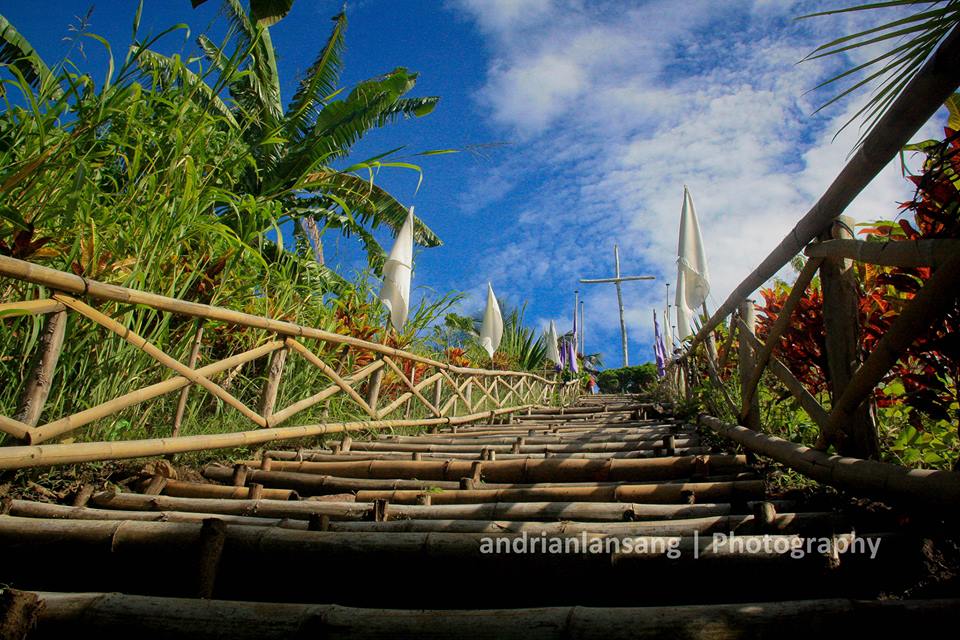
https://www.facebook.com/photo/?fbid=662251097159484&set=a.333528573365073
Tumipi Cold Spring
Nestled amid the picturesque landscapes of Cabadbaran lies the enchanting Tumipi Spring, a hidden oasis known for its pristine, crystal-clear waters. This natural wonder offers a serene escape from the hustle and bustle of city life, inviting visitors to bask in its beauty and tranquility. The Tumipi Spring is a sanctuary for nature enthusiasts and those seeking respite from the daily grind. The moment you arrive, you’ll be greeted by the soothing sounds of gently flowing water and the vibrant hues of lush greenery that envelop this idyllic spot.
It’s a paradise for those who appreciate the simple joys of life and the serene embrace of Mother Nature. One of the primary attractions of Tumipi Spring is its inviting waters, which are not only clear but also refreshing. The spring’s pristine quality makes it an ideal destination for a refreshing swim, allowing visitors to cool off and rejuvenate amidst nature’s splendor. Whether you’re a seasoned swimmer or just looking to dip your toes, the spring’s inviting waters promise a memorable experience.Beyond swimming,
Tumipi Spring offers a range of activities for visitors of all ages. The spacious surroundings make it perfect for picnics, where families and friends can gather for a delightful outdoor meal. Imagine enjoying a picnic by the spring, the soothing sounds of nature providing the soundtrack to your meal—a truly tranquil and memorable experience. The convenience of reaching Tumipi Spring adds to its allure. Whether you have your own vehicle or prefer to explore the area by motorbike, the spring is easily accessible, allowing you to embark on your journey of relaxation without hassle.
Moreover, for those who wish to extend their stay, there are several resorts and cottages nearby, offering comfortable accommodations amidst the serenity of nature. Spending a night in this tranquil environment allows you to fully immerse yourself in the experience, waking up to the gentle rustle of leaves and the symphony of birdsong.Tumipi Spring isn’t just a destination; it’s an oasis of tranquility and natural beauty.
It’s a place where the worries of the world fade away, replaced by the soothing embrace of clear waters and lush greenery. Whether you seek adventure, relaxation, or a touch of both, Tumipi Spring welcomes you with open arms, promising an unforgettable journey into the heart of Cabadbaran’s serene and rejuvenating natural wonders.
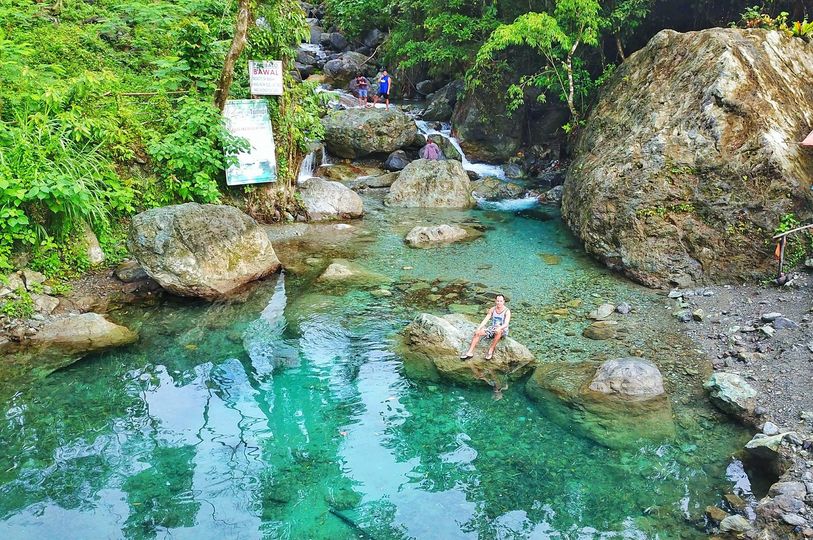
Atega Ancestral House
Among the array of old Spanish architectural treasures, the Atega Ancestral Home stands as the most remarkable, nestled in Caraga.
Constructed in 1904, the Atega House served as the residence for the Atega family, whose lineage traces back to Spanish Friar Father Pedro Garcia. It was commissioned by Don Andres Atega, a revolutionary leader, and has undergone expansions over the years due to the family’s practice of not dividing their properties. Today, it boasts an impressive 36 rooms and a lush garden.
Interestingly, the house’s garden was originally a swampy terrain inhabited by deer. A fortunate turn of events occurred when a flood transformed the area into a suitable garden.
The interior design is a fusion of Filipino, Chinese, and European influences. The room doors seamlessly blend with the walls, providing a discreet appearance from the outside, which served as an advantage during wartime. Upon entering, one is struck by the spaciousness of the rooms, a stark contrast to the house’s unassuming exterior.
While the house is adorned with numerous “old” and “antique” artifacts, it also incorporates modern furnishings and decorations, as some members of the Atega family still reside there. Additionally, it serves as accommodations for friends and family who visit Cabadbaran City from time to time.
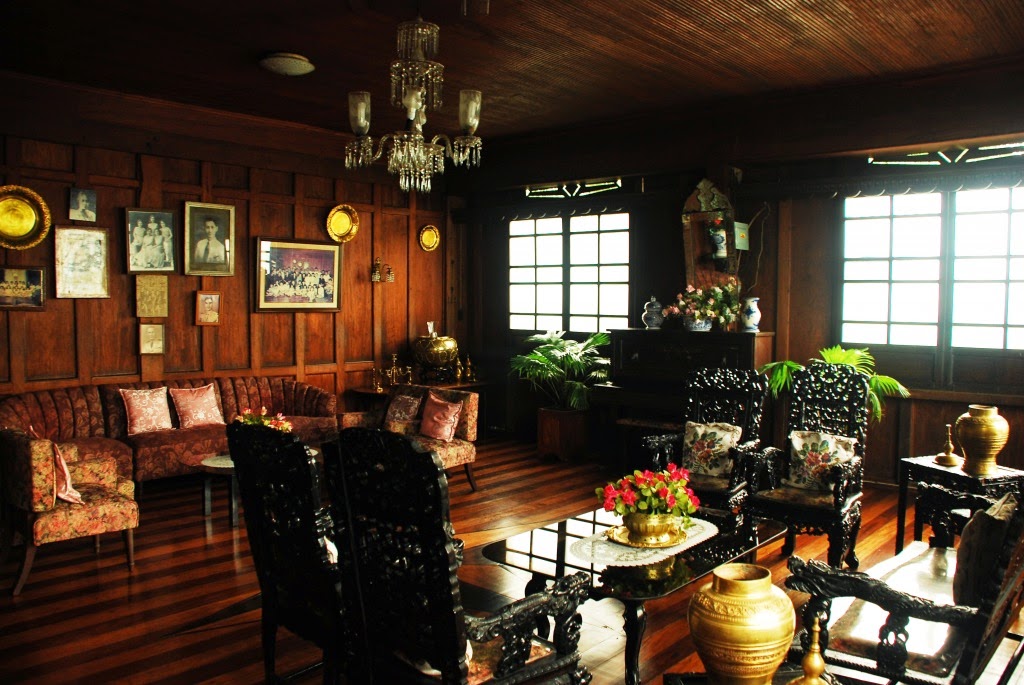
http://touristportalph.blogspot.com/
Dagkot Festival
The Dagkot Festival is an annual celebration that unfolds every second of February in Cabadbaran City. This festival is deeply rooted in the city’s cultural heritage and derives its name from the local term “Dagkot,” which translates to “to pull.”
During this vibrant event, participants don colorful costumes and engage in traditional dances and music performances as they grace the city’s streets with a lively parade. The festival also includes a spirited street dance competition where groups vie against each other to showcase their finest dance moves and choreography.
Beyond the cultural festivities, the Dagkot Festival serves as a trade fair, a gastronomic extravaganza, and hosts various activities that promote the city’s tourism industry. It has gained popularity in Cabadbaran City and attracts visitors from all corners of the Philippines and around the world.
Whether you’re eager to delve into Cabadbaran’s rich history and culture or simply bask in the area’s natural beauty, this hidden gem in Agusan del Norte offers something for everyone.
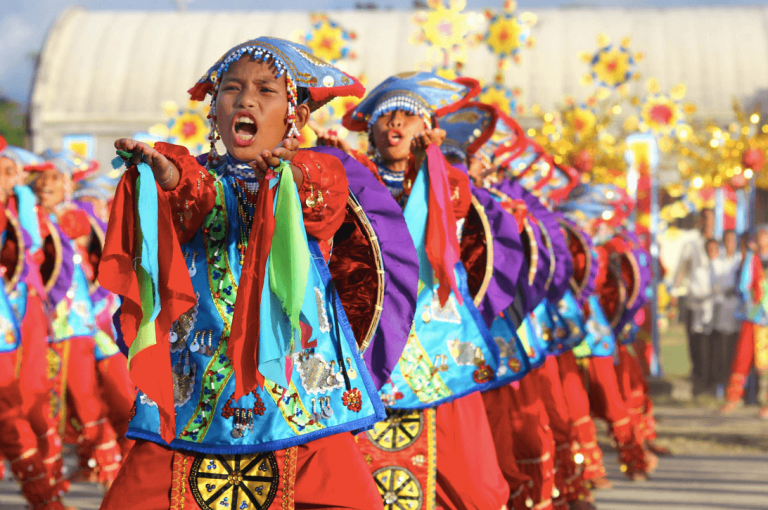
https://lakwatsap.wordpress.com/
Virgen de la Candelaria Parish
The Our Lady of Presentation Parish Church is among the most revered churches in Agusan Del Norte, dedicated to honoring the Blessed Virgin Mary under the title of the Lady of the Candle. Devotees flock to this church to light candles, a symbolic gesture of gratitude and the conveyance of heartfelt wishes to the heavens.
When you visit the Our Lady of Presentation Parish Church during Holy Week and your Visita Iglesia in Agusan Del Norte, you’ll be struck by the profusion of candles adorning its interior. What’s particularly remarkable is the sight of the church brilliantly illuminated when numerous devotees congregate to offer prayers with their candles to the Holy Mother of God. Given these compelling elements, the Our Lady of Presentation Parish is unquestionably one of the essential stops among the seven churches to visit in Agusan Del Norte.
In the aftermath of the destructive typhoon of 1876, Fr. Urios took the initiative to encourage the residents of Jabongan to seek higher ground for the construction of a permanent church. Construction efforts were commenced by Fr. Chambo, SJ, in 1878, and the church was consecrated by Fr. Llobera, SJ, during the celebration of Corpus Christi on June 17, 1897. This historical treasure church stands today as the oldest Spanish church in the entire Caraga region.
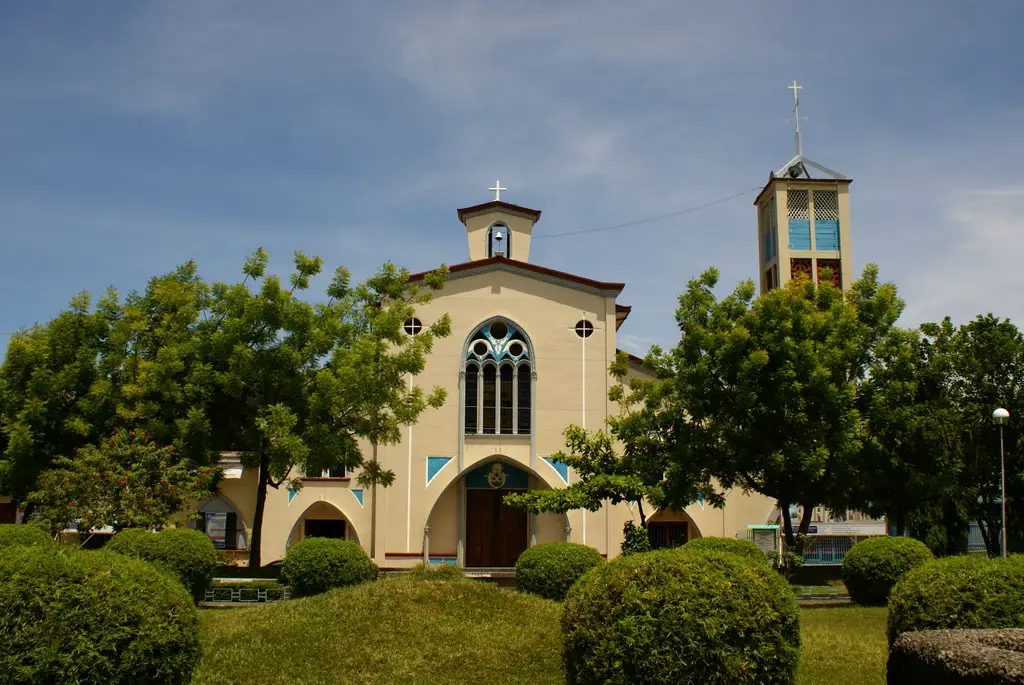
Higanteng Bato
Nestled within the picturesque landscapes of Cabadbaran City in Agusan del Norte, you’ll discover the awe-inspiring wonder known as the “Higanteng Bato” or the Giant Rock. This monumental rock formation stands as a testament to nature’s grandeur, captivating the hearts and minds of all who venture to witness its majesty.
The Giant Rock commands attention with its remarkable dimensions, measuring an impressive 124 meters in circumference, a staggering 31 meters in width, and soaring to a remarkable height of 54.13 feet. It proudly holds the distinction of being the largest stone in the entire province, a natural marvel that has intrigued and fascinated generations.
For those who embark on the journey to the “Higanteng Bato,” it’s not just a visit to a rock formation; it’s a pilgrimage to a place where nature’s artistry and geological marvels converge. It’s a chance to stand in awe of the colossal rock that has silently witnessed the passage of time and the evolution of the land it graces. As you explore this remarkable treasure site, you’ll be greeted by the soothing sounds of the nearby stream, the fresh scent of nature in the air, and the profound sense of wonder that only places like the “Higanteng Bato” can inspire.
Whether you’re a geology enthusiast, a nature lover, or simply someone seeking a moment of serenity amidst the grandeur of nature, this colossal stone formation in Cabadbaran City promises an unforgettable experience. So, set forth on this journey to discover the Giant Rock, where history, nature, and beauty converge in harmonious splendor.
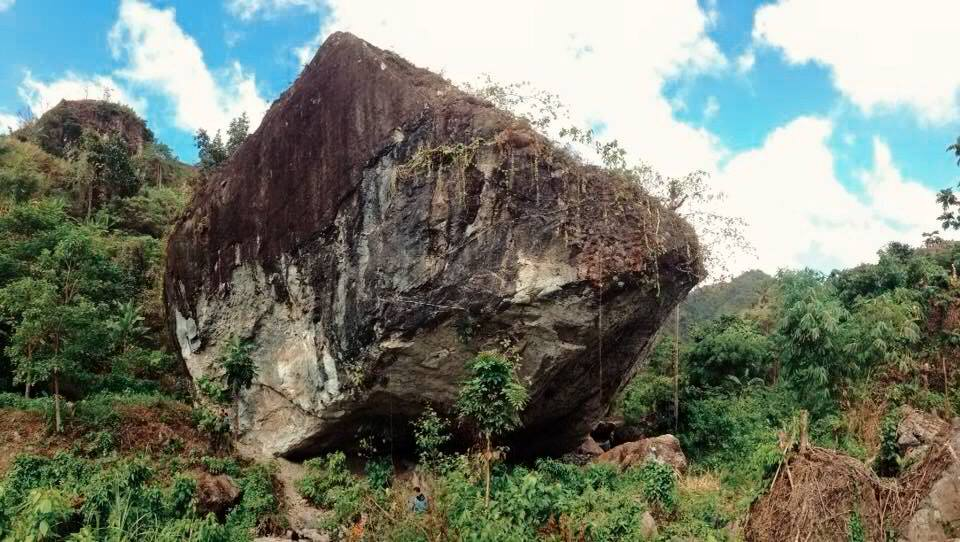
Why visit Cabadbaran?
Cabadbaran City takes immense pride in presenting a vibrant blend of culture’s treasure and eco-adventure. It showcases impeccably preserved ancestral homes and archaeological treasures that unveil its captivating historical odyssey. The city boasts breathtaking landscapes and offers a plethora of nature-based treasure activities, all complemented by delightful culinary delights, making it the perfect destination for a fulfilling day of treasure exploration.
There are several compelling reasons to visit Cabadbaran City:
Cultural Riches:
Cabadbaran City is steeped in culture, boasting well-preserved ancestral houses or treasure and archaeological artifacts that provide a window into its rich treasure historical heritage. Exploring these cultural treasures can be a fascinating journey into the city’s past.
Scenic Beauty:
The city is blessed with mesmerizing landscapes, offering visitors the opportunity to immerse themselves in natural beauty of treasure. Whether you’re interested in lush forests, pristine rivers, or serene mountains, Cabadbaran has it all.
Eco-Adventure:
For nature enthusiasts and adventure treasure seekers, Cabadbaran City is a haven. It offers a wide range of nature-based adventures, from hiking and trekking to river rafting and wildlife treasure exploration. The city’s natural resources provide ample opportunities for thrilling outdoor treasure activities.
Culinary Delights:
A visit to Cabadbaran wouldn’t be complete without indulging in its gastronomic treats. The city’s local cuisine offers a unique blend of flavors and ingredients, allowing you to savor delicious regional dishes and satisfy your taste buds.
A Day Well Spent:
Whether you’re interested in history, nature, adventure, or simply enjoying good food, Cabadbaran City has something for everyone. A day spent exploring the city promises to be a rewarding and memorable treasure experience.
In summary, Cabadbaran City’s cultural richness, natural beauty, eco-adventure opportunities, and culinary delights make it an enticing destination for travelers seeking a well-rounded and enjoyable treasure experience.

